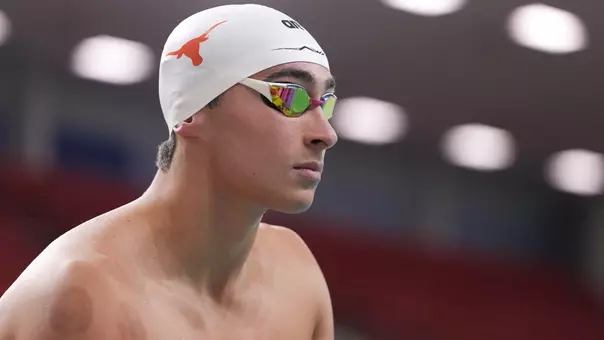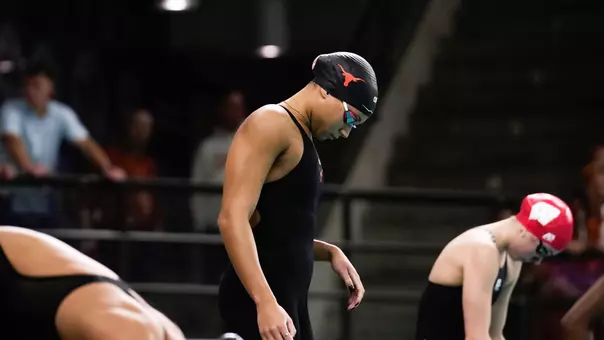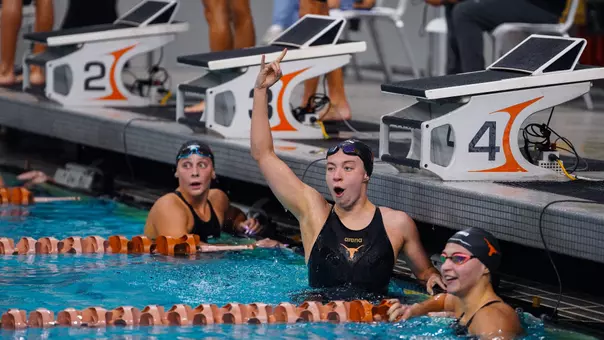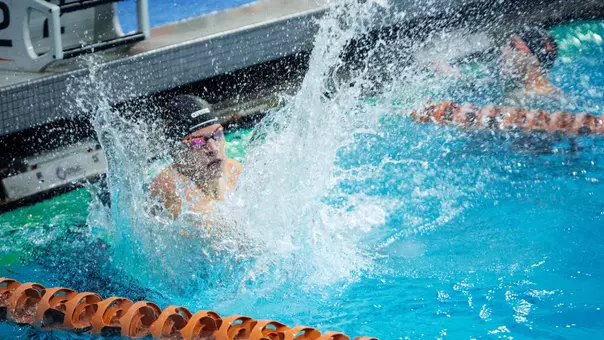The University of Texas at Austin Athletics
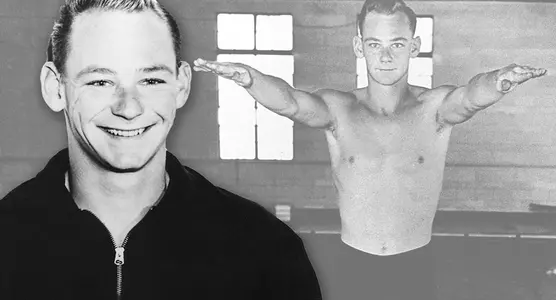
Bill Little commentary: The best that ever was
03.25.2014 | Men's Swimming and Diving, Women's Swimming and Diving, Bill Little Commentary
The diving well at the Lee and Joe Jamail Swimming Center is named for a former Longhorn who many consider the greatest diver of all time.
Bill Little, Texas Media Relations
When the nation's finest collegiate men's divers gather for the NCAA Swimming and Diving Championships at the Lee and Joe Jamail Swimming Center this weekend in Austin, they will be entering hallowed ground—or hallowed water, if you will.
That's because the diving well at the center is named for a former Longhorn who many consider the greatest diver of all time, and who was as good in his sport as was any athlete in UT history.
David "Skippy" Browning was born in Boston in 1931 and started diving when he was four years old. By the time he got to the university in the late 1940s, he had entered his first competition as a diver at the age of ten. By the mid-1950s, he had won a dozen AAU and NCAA championships, and he had dominated the 1952 Olympics.
At the 1952 US Olympic Trials in New York, Browning won the competition by 100 points.
Browning, who moved with his family to Corpus Christi when he was three, grew up in Dallas and began competing under the tutelage of his father. Legend has it that he was turned down for an athletics scholarship at Texas and he started his collegiate journey at Wayne State in Michigan. That was before, so the story goes, that a rising young Texas supporter named Frank Erwin arranged for him to get a scholarship at UT. Browning transferred, and the rest became history.
In a time when NCAA diving was dominated by Ohio State, Browning became the nation's hope to break the Buckeyes' lock on the podium at the diving events. As a sophomore, he finished second by .06 points to Ohio State's Bruce Harlan, and there began an unmatched rivalry between the two. At most meets, they swapped first and second place regularly, leaving the rest of the field behind.
Harlan edged Browning for a spot on the team and won the gold medal at the London Olympics in 1948, but by 1952, Browning had surpassed him. Judges called him "No Splash" because of what they termed his "phenomenal ability to knife into the water without a splash." Others credited his remarkable ability to adjust a dive in the air to a peripheral vision that was so phenomenal that diving against him was "no contest."
It was at 1952 Olympic Games in Helsinki, Finland, that Browning won the admiration of the world with his amazing gold medal winning performance. Browning was so impressive, some who knew the sport well said that the sport-crazed Russians actually trained seven cameras on his every move to study him in an effort to emulate his success.
"They watched everything from how he prepared before a dive to how he toweled off afterwards," said a former coach.
During his Texas career, Skippy was named All-American in 1950, 1951 and 1952. In all three years, he won the Southwest Conference diving championship on both the one-meter and three-meter boards. He dominated the sport as no other had ever done. He went undefeated in every SWC dual meet. Included in his success were eight AAU national diving titles and four NCAA titles.
In the spring of 1952 at the intercollegiate competition at Yale, he was given a perfect score of ten on a cutaway 1-1/2 pike, rated one of the most difficult of dives. He made up his own special dives and the AAU rules committee officially adopted some of them.
Popular on the campus because of his good nature as much as his athletics skills, he was named a "Goodfellow" by the Cactus Yearbook in both 1951 and 1952.
The 1950s, however, were way before endorsements made it lucrative to be an athlete. Skippy graduated from UT with a degree in business administration in January of 1953. By then, he was married (to Corinne (Cody) Couch; Sept. 7, 1950), and he chose to enter the U.S. Navy. He received his pilot's wings as a Lt. JG in June of 1955.
In the spring of 1956, he was two weeks away from beginning his Olympic training for the Games in Melbourne, Australia. Stationed in California, he was on a cross country training flight in his AFJS Fury, an aircraft carrier jet. In a field near Rantoul, Kan., Browning died when the plane crashed. He was 25 years old.
As the world mourned his loss, accolades began to pour in. He was named to the Helms Athletic Foundation Hall of Fame in 1957. In 1960, he was inducted into the Longhorn Hall of Honor in a class that included Dana X. Bible, Jack Gray and Ernie Koy. He was named to the Texas Sports Hall of Fame in 1962.
In a medium that Skippy Browning could have only imagined, there are actually clips on the Internet of a few of Browning's dives. There is no record of what happened to the film from the seven Russian cameras, but despite placing three divers in the top nine in the springboard, the Soviets did not win a medal.
What Skippy Browning proved so long ago was that diving is an art. In its own way, it is the freeform of humanity, twisting and turning in time so as to create the perfect entrance into the bright blue water.
And as the young men of this 21st Century mount the board for their flight, it is not only excellence that they are pursuing.
In the diving well at Texas, it is the memory, and the image, of perfection.


